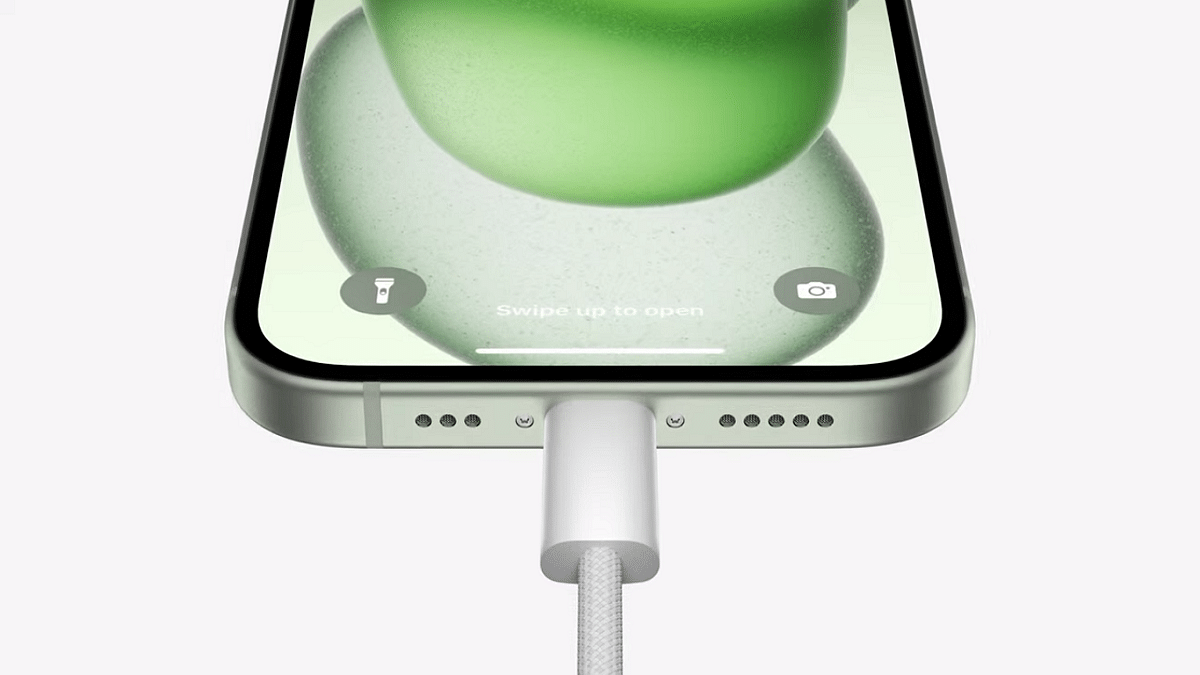Key Highlights
- iPhone 15 series launched with USB-C port
- iPhone 15 series users can enjoy the advantages of USB 3.0
- The shift to USB-C promotes sustainability by reducing electronic waste
The introduction of a USB-C port in the new iPhone 15 series marks a noteworthy departure from the familiar Lightning port. For long-time iPhone users accustomed to Lightning cables, this change may raise questions about its rationale and advantages. Why the shift to USB-C, and what does it mean for you? Let’s delve into the relevance of USB-C on the iPhone 15 and its implications for future iPhones. Also Read | Apple iPhone 14 Vs Apple iPhone 15 Comparison
Why USB-C?
Apple’s decision to incorporate USB-C into the iPhone 15 series is influenced by regulatory requirements. The EU has mandated that all smartphones must feature a universal charging port, USB-C, by autumn 2024. India has similarly mandated the adoption of USB-C for electronic devices by March 2025. Although Apple initially resisted this move, it ultimately had to comply with the regulatory mandate.
Benefits Of USB-C On iPhones
Compatibility With Non-Apple Devices
iPhone 15 and future models with USB-C can be charged using USB-C cables from non-Apple devices. Given that the Android world embraced USB-C in 2015, this means greater cable interchangeability, reducing the need for Lightning cables.
Universal Cable For Apple Devices
USB-C becomes the unified cable for charging and data transfer across various Apple products, including iPhone 15 series, Macs, AirPods Pro 2nd gen, iPads, and more. Apple’s early adoption of USB-C in its 2015 MacBook paved the way for this compatibility.
Cost Savings On Cables
With USB-C serving as the one-cable-fits-all solution, users can avoid purchasing separate cables for various Apple and non-Apple products. EU commissioner Thierry Breton estimates that this transition could save Apple consumers around 250 million euros annually.
Faster Charging And Data Transfer
While the vanilla iPhone 15 and iPhone 15 Plus support USB-C at the USB 2.0 standard (equivalent to Lightning’s 480 Mbps data transfer speed), the iPhone 15 Pro and Pro Max offer USB 3.0 support. USB 3.0 delivers approximately 10x faster data transfer speeds (10 Gbps) and can charge at 0.9A compared to USB 2.0’s 0.5A.
Also Read | iPhone 15 Series Price Comparison In India, US, UK, Dubai, Vietnam: Where It’s The Cheapest?
External Display Support
The iPhone 15 series allows connection to external displays via a USB-C cable, supporting 4K HDR resolution and a 60Hz refresh rate. This capability opens doors to watching and editing videos on larger screens, providing both cable and display support DisplayPort.
Reduced Electronic Waste
From an environmental perspective, reducing the number of cables you need translates to less electronic waste. This contributes to a smaller carbon footprint and a positive impact on the environment.
Transitioning From Lightning To USB-C
For those wondering about the fate of their Lightning cables, they can be repurposed by connecting them to a USB Type-C port with a USB-C to Lightning Adapter, available from Apple and third-party alternatives. Recycling is another eco-friendly option to consider.
In conclusion, the shift to USB-C in the iPhone 15 series represents a forward-looking approach driven by regulatory mandates and sustainability goals. While it may require some adjustment for long-time iPhone users, the benefits of USB-C compatibility with a wide range of devices and reduced e-waste make it a step towards a more interconnected and eco-conscious future.
Also Read | What’s Next For iPhone? Apple’s iOS 17 Unveils Some Features For Later Release

